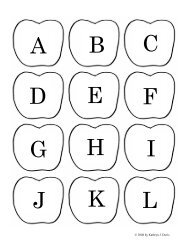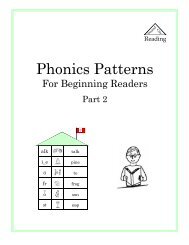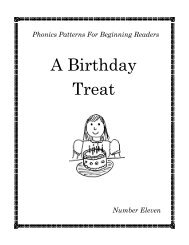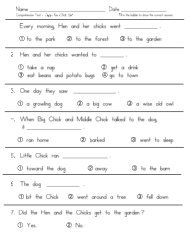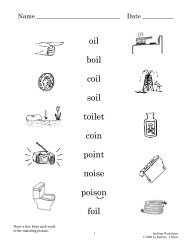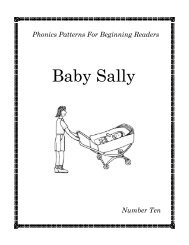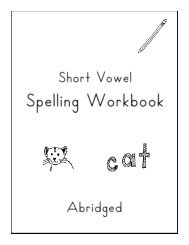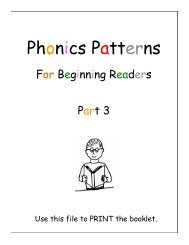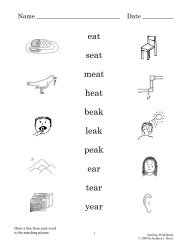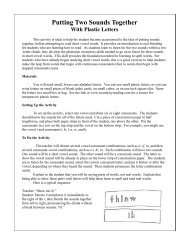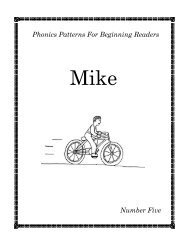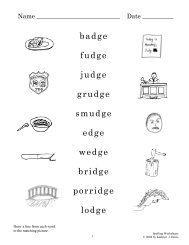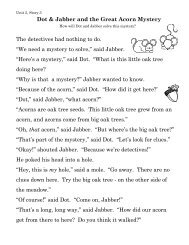Short Vowel Words And Sentences a i o u e - Sound City Reading
Short Vowel Words And Sentences a i o u e - Sound City Reading
Short Vowel Words And Sentences a i o u e - Sound City Reading
Create successful ePaper yourself
Turn your PDF publications into a flip-book with our unique Google optimized e-Paper software.
Using Plastic Letters To Spell Three Letter <strong>Words</strong><br />
This activity works well with one to six students, or even a whole class if you have<br />
enough sets of letters. Instead of using the whole alphabet at one time, each student will<br />
take about six or eight letters to work with, designated by the teacher. Students spell<br />
words dictated by the teacher with the letters. They do not write the words on paper, which<br />
allows the spelling to proceed rapidly from one word to the next.<br />
Make a list ahead of time of the words you want to teach. Then list all of the letters<br />
that will be needed.<br />
Have the students sit around a table or at their desks. Ahead of time, cut sheets of<br />
construction paper lengthwise to form two pieces. Each student takes two pieces and places<br />
one above the other in front of them on the table. The top sheet is the "letter bank." The<br />
bottom sheet is the spelling area.<br />
Give each student a box with two each of all the alphabet letters. Say the sound of<br />
each letter the students will need, one at a time. When they hear each sound, students<br />
should find the letter needed and place it on the top sheet of construction paper. Explain to<br />
the students that this is their letter bank. When all the needed letters have been placed in<br />
the letter bank, you’re ready to begin.<br />
Say each word slowly and distinctly and coach the students to listen for each sound<br />
and place the letters accordingly from left to right. Model as needed. Each student will<br />
select the letters needed from his own "letter bank," and spell the word in the spelling area.<br />
Check each student’s work and have them listen again and correct as needed. Have students<br />
place the letters back into their letter banks before dictating another word.<br />
After the students become comfortable with the process, go through a number of<br />
words as quickly as the students can spell them.<br />
Sometimes, have the students leave a word that they spelled in their spelling area,<br />
and ask them to change one letter to create a new word. For example, if the student has<br />
spelled cat, say, "Change just the beginning letter to make the word sat." Or say, "Change<br />
the last letter to make the word cap." Or say, "Change the middle letter to make the word<br />
cut." Soon, the students won't need to be cued. Just say a string of words as follows, one<br />
at a time, and have students replace or remove letters as needed to spell the word: cat, can,<br />
fan, fax, tax, ax, ox, box.<br />
This activity greatly enhances the student's phonemic awareness. He is matching<br />
letters with the sounds he hears in words. He is learning to sequence, add, remove, and<br />
substitute sounds in known words to make new words.<br />
Note: Before you do this exercise, first be sure<br />
the students can do the two-letter exercise with<br />
plastic letters, as described on a previous page.<br />
© 2011 by Kathryn J. Davis 15<br />
<strong>Short</strong> <strong>Vowel</strong> <strong>Words</strong> <strong>And</strong> <strong>Sentences</strong>



